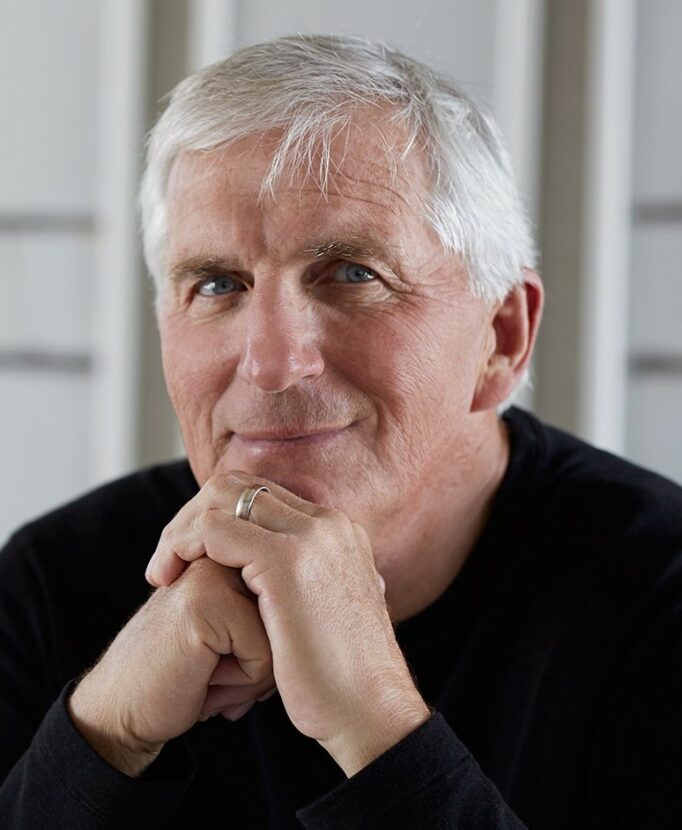Exclusive
Leading Change and Surviving the Experience
Leadership expert and bestselling author, Gary Heil, and WSB President, Ryan Heil—authors of ‘Choose Love Not Fear’—share insights on how to lead change and survive the experience.

To advocate for change not supported by the culture of an organization can be hazardous to your career health. A colleague of ours re-learned that lesson last week when she advocated for an innovative change despite the political pressure to do otherwise. Off the record, every person agreed, her ideas were not only beneficial but necessary. However, within hours of her decision to begin implementation efforts, she was fired from her high-profile position. The organizational white blood cells had mobilized to ensure that she was no longer in a place to challenge the organization’s present practices or its existing power structure.
As we listened to the anger and disappointment in her voice, we were frustrated—but not surprised. We had seen this movie before. A good leader, who summoned the courage to challenge present practices, had been marginalized—a casualty of an ineffective attempt to build a constituency willing to take a different road into the future.
In our experience, offending change agents are not usually fired. They are marginalized more subtly. Often, they are labeled deviants (or worse), physically or politically separated, called cultural misfits, graded low performers, and separated from the rest of the organization before their ideas gain resonance. Nearly every person has ‘felt’ the pressure to agree with the boss for fear that they will be awarded the career limiting label of ‘non-team player.’
For those who are marginalized, the pain is real. Studies have demonstrated that the pain felt by members of a group that have lost their sense of belonging, manifests in the same way as the pain we feel when we break an arm. No wonder so many leaders are hesitant to lead in ways that significantly challenge long-held beliefs or to set goals that might require people to quickly adopt new habits that are inconsistent with “what worked yesterday.”
What the Best Do Differently
We are not making the argument that leading change is necessarily career limiting. We are arguing that leading change requires courage and a level of skill that is uncommon. We are arguing that most leadership failures occur primarily because we don’t get comfortable with the types of changes we envision for our teams.
After studying leaders who were attempting to transform their organizations for nearly a decade, we were struck by how the best leaders don’t spend much time thinking about how to lead change. Instead, they are laser focused on giving people an opportunity to be remarkable. Of course, they understand the cultural risks and are skillful managers of those risks. Yet, their future-focus seems to render them more comfortable in the discomfort of fomenting change and more committed to building a constituency willing to sacrifice for a different future.
We believe that the most successful leaders share a few common characteristics. Here are six. Let us know what you think.
1. They change themselves before expecting others to change.
They understand that leaders lead by example. If you want others to change, you must summon the courage to challenge the present culture and change yourself first. They change their calendars understanding that where they spend their time highlights their priorities. And they change the stories they tell and the dialogues they create, sending clear signals that the future will not look like the past. They understand that when they change, it tacitly gives others permission to do the same.
2. They Choose Love and not Fear.
It’s the first choice every leader makes—consciously or unconsciously. It is impossible to choose both. The best choose Love because they understand that a culture where positive emotion flourishes is the only choice that makes any sense if high performance and adaptability are goals. Fear makes us dumber. Fear inhibits learning and creativity. Fear narrows our vision. Using Fear to control may give us a false sense of control but that control comes at a high cost. Love, Gratitude, Empathy—these are the fuels that accelerate innovation and change. This is not ‘pie in the sky’ or ‘soft’ thinking. It is ludicrous to think that a team will commit to taking risks when the culture is fearful. Fear creates a fight, flight, or freeze reaction which almost always leads a group to choose the safe harbor of yesterday’s practices.
3. They are in the opportunity business—not the motivation business.
They don’t try to motivate people. That’s not their job. They believe their job is to create an opportunity that is so engaging that people can’t wait to enlist and sacrifice for the common good. They believe people are born motivated and they believe that it is their job not to get in the way of people’s natural motivation to make a difference in the world. They are clear in what they intend to create in the future, and they ensure that the environment is safe and fair, that they share a sense of belonging, that every person has a chance to learn and grow, and that the underlying cause is something where people can find meaning.
4. They don’t act alone.
They recruit people of like mind before they jump. They are aware that the cultural resistance will be substantial and that there is safety in numbers. They intuitively understand that when one person advocates for change, it is easy for the group to say that ‘they just don’t get it.’ When it is a number of high performers challenging the status quo, they are far more likely to find a willing audience willing to consider the wisdom of taking a different road.
5. They are more mindful.
They are more mindful of what is happening in the moment. They refuse to go on autopilot and let the mindsets and practices of the past dictate too much of the future. They resist the temptation to multi-task, arrive late, or be distracted by their phones in meetings. They listen intently because they care about what others are saying. They don’t assume they have all the answers or that their thinking is bullet-proof. Sounds like common-sense. It is not, however, common. The best work at remaining ‘in the present’ because they understand that when we are more present, we tend to build better relationships, find more creative solutions, and lead more effectively. Mindfulness is not a tactic. It is a way of living that makes us more sensitive to the context in which we live and more aware of the needs of the people we hope to lead.
6. They create a Culture of Celebrated Discontent.
Put simply, the leaders celebrate progress more often and more lavishly. They are impatient—constantly raising the performance bar. They create excitement around small wins and demand that every person give their best. They do it in a way where there are far more celebrations than critiques. They say thank you more often and are more aware of how their success is dependent on the actions of others. They understand that there are few forces as powerful as a team acting because they want to change the world.
Learning to lead change and to thrive in the process requires courage. Absent a crisis, forging a new path into the future entails risk because present cultural pressures tend to reward the predictable and punish the novel. The best understand the risks and retain the willingness and ability to act. To paraphrase a famous quote, the best know that the courage they must summon to act does not require that they overcome their fears. It requires that they understand, and lead others to understand, that what they are trying to accomplish is more important than their personal discomfort.
Events aren’t easy, but working with WSB is. WSB works with thousands of respected influencers, thought leaders, and speakers each year and our experienced sales team is committed to the success of your event. For more leadership speaker ideas, please contact us.
